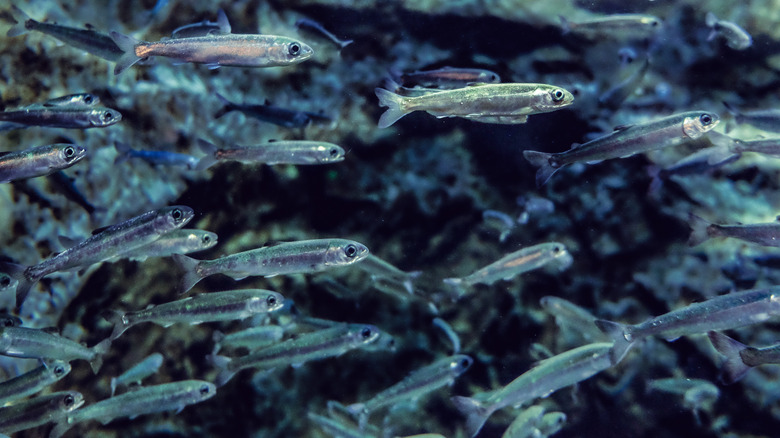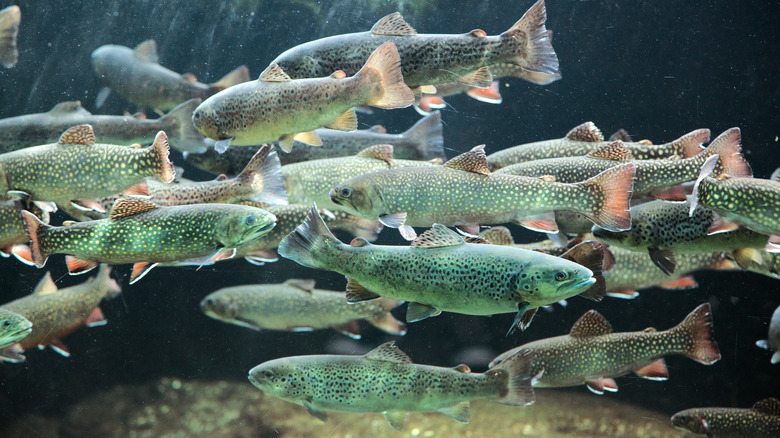The Fish Doorbell Explained: Why This Livestream Will Restore Your Faith In Humanity
Dotted with rivers and known for its extensive canal system, the city of Utrecht in the Netherlands has been playing host to an interesting phenomenon for the past few years. It is home to the one-of-a-kind Fish Doorbell system, which, as confusing as it may sound, is precisely what it sounds like — a doorbell designed for various species of fish. We're pretty sure you have many questions. Why do fish require a doorbell? Who rings the doorbell, and what is this Fish Doorbell actually used for?
The waterways that dot Utrecht's landscape are used by various fish species to migrate upstream, where they spawn and reproduce. However, this process has been under threat for several years due to the presence of the Weerdsluis lock, a sluice gate put in place to control the flow of water through the city. This lock usually remains in the closed position during the fish migration season and has proven to be a major hindrance to the life cycle of the various fish species that swim through it.
Because it was not deemed feasible to keep a constant eye on fish migration patterns, the solution to this issue was to keep the sluice gate open at random intervals during the migration season and hope for the best. Needless to say, this system was inefficient and did not yield the desired results. However, in 2021, local ecologists hit upon a brilliant idea that would not only help the fish easily swim upstream, but also allow the Weerdsluis lock to be opened only when the fish needed it.
Enter the Fish Doorbell.
What is the Fish Doorbell and how does it work?
Entrusted with a problem that needed a solution, local ecologists worked with the Municipality of Utrecht and several local agencies to come up with the now-famous Fish Doorbell. This system comprises an underwater camera, positioned strategically near the sluice gates of the Weerdsluis lock. This camera broadcasts a live feed of everything that happens at the gates for authorities to perform real-time monitoring of the sluice gates, and check for the presence of fish.
The system went live for the first time in March 2021 — albeit with a slight change. Instead of a monitoring system that was closed off to a select group of people, the people behind the system used the power of crowdsourcing to help them spot fish. They set up a live stream website with a video player streaming real-time images of the Weerdsluis lock. They also used a conveniently positioned "doorbell" icon that let viewers hit the doorbell icon and "ring" it every time a fish appeared on the screen. It's sort of a reverse Ring video doorbell — people viewing the video feed ring the doorbell for visitors that have shown up, instead of the other way around.
While it took a while for people to take notice, the concept has since then gone viral. The dedicated Fish Doorbell website has since then raked up millions of page views, and even in the first year of operations, there were more than 100,000 rings. People participated in hordes, and the program ended up a resounding success. In 2023, the Fish Doorbell system made headlines after it became the topic of several TikTok videos.
How to access the Fish Doorbell system?
Thanks to several media reports and viral videos, the Fish Doorbell system is now a world-renowned crowdsourced phenomenon and is watched by thousands of people across the globe. However, the people behind the tool have designed a system that only lets approximately 950 viewers ring the virtual doorbell — everyone else can follow along passively via livestream.
To access the Fish Doorbell, you will need to visit the official website of the program, which has an always-on video of the system. Right below the video, the platform displays the number of users watching the stream. If there are open spots, you will see an unmissable doorbell icon in the right corner. (If all the spots are full, you'll just see a YouTube livestream of the video feed instead.) If you see any fish while watching the video, you can press the icon, which, in turn, will trigger an alert that reaches the person managing the gates.
It's been almost a month since the 2024 spring season began and the cameras placed next to the Weerdsluis lock were switched on for the year. The peak season for fish migration is April, and that is when most of the migrations happen. By June, the fish migration season will come to an end and these cameras will be switched off until next spring.


